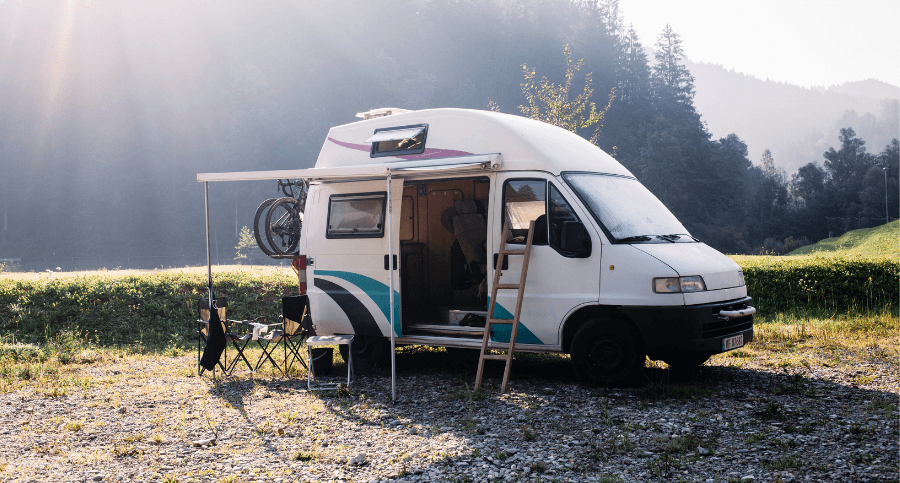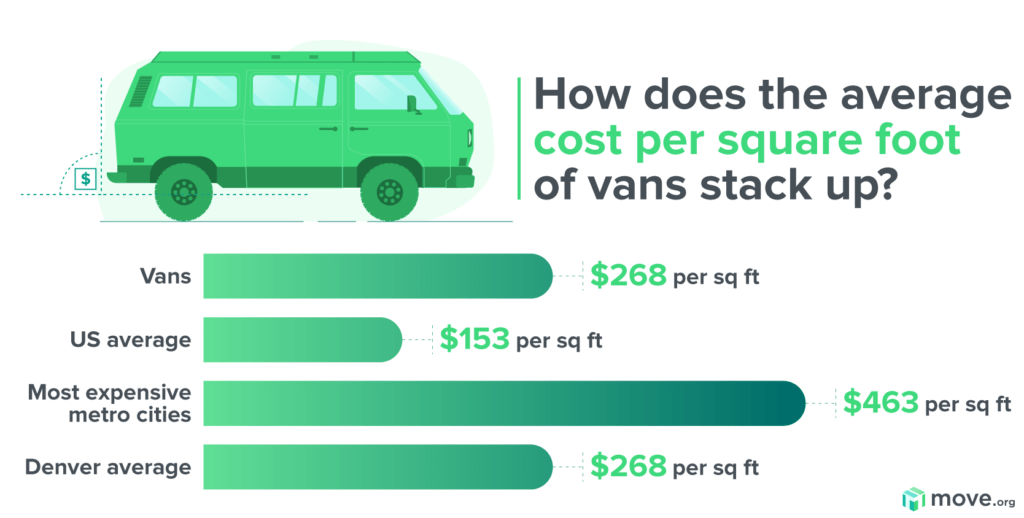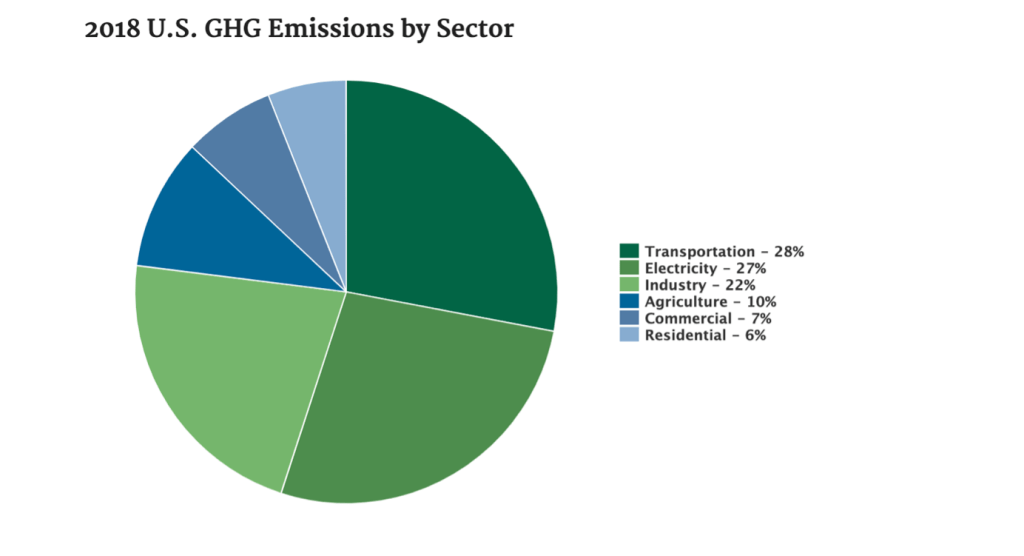Van life has a reputation that conjures up imagery of a free-spirited, eco-friendly lifestyle — something in total opposition to the world of mega-mansions and over-consumption. But is van life really that sustainable?
There has been a huge increase in van living throughout recent years. The hashtag #vanlife on Instagram has over 7 million posts, which is up 312% from 2017. (Mike, 2020)

The median single-family house size in the United States in 2019 was 2,301 square feet, compared to approximately 80 square feet for an average campervan. Living in such a small space undoubtedly means decreased heating, cooling, and overall energy requirements — but how does it compare in terms of other emissions? (Roberts, 2020)

According to the United States Environmental Protection Agency (EPA), the transport sector is one of the largest contributors of greenhouse gases, accounting for 28% of total emissions in the U.S. in 2018. Living in a mobile van, rather than residing in one place, contributes to this transport category. But does this mean that life on the road is a bad thing for the environment overall? (Statista, 201)

The positives
Living in a mobile vehicle can be one of the most sustainable ways to live, provided it is done consciously and thoughtfully. Furthermore, a range of sustainable practices tend to naturally exist within established trends and customs of the van lifestyle.
For instance, when people choose to travel in a van, they often head towards climates that require less heating or cooling. In addition, many choose to install solar panels on their vehicles, making van life particularly sustainable. The energy sector is heavily reliant on fossil fuels and is responsible for 40% of global carbon dioxide emissions, so using cleaner energy options is always a good thing for planet Earth.
Having less space to store belongings also means that van dwellers naturally become more conscious consumers. It is well documented that rising levels of consumption, population growth, and mechanisation have been linked to deforestation, biodiversity loss, soil erosion, and pollution. Certain aspects of van life ensure that many individuals living in a van do their part in minimising these negative consequences. (EPA, 2021)
Ways to increase the sustainability of van life
Despite existing positives, there are a number of ways through which the sustainability of van life can be maximised. (The Conversation, 2021)
- Using eco-friendly or salvaged materials in order to convert the van into a liveable space.
- Planning travel routes ahead of time, and preventing needless vehicle emissions.
- Opting for a vegan diet to reduce greenhouse gas emissions.
- Being mindful of waste, and making sure to dispose of it consciously.
- Respecting wildlife, local communities, and the natural environment.
- Choosing electric or newer vehicles which are more fuel-efficient.
“Regardless of the car, drivers can reduce fuel consumption by 15%-20% by improving driving habits alone – reducing emissions and saving money at the same time.”
Source: The Conversation
The verdict
Overall, the carbon emissions an individual produces from living on the road must be assessed on a case by case basis. While some people travel with others, adopt a vegan diet, use solar power, and never litter, others will engage in far fewer sustainable practices. Like most activities, van life can be sustainable if undertaken with consideration of the planet’s natural environment in mind.
A great place to start on this journey is education. Whether we choose to live in a van, a tiny house, a tent, or an apartment building, we must recognise that we all have a part to play in creating a thrivable future.























